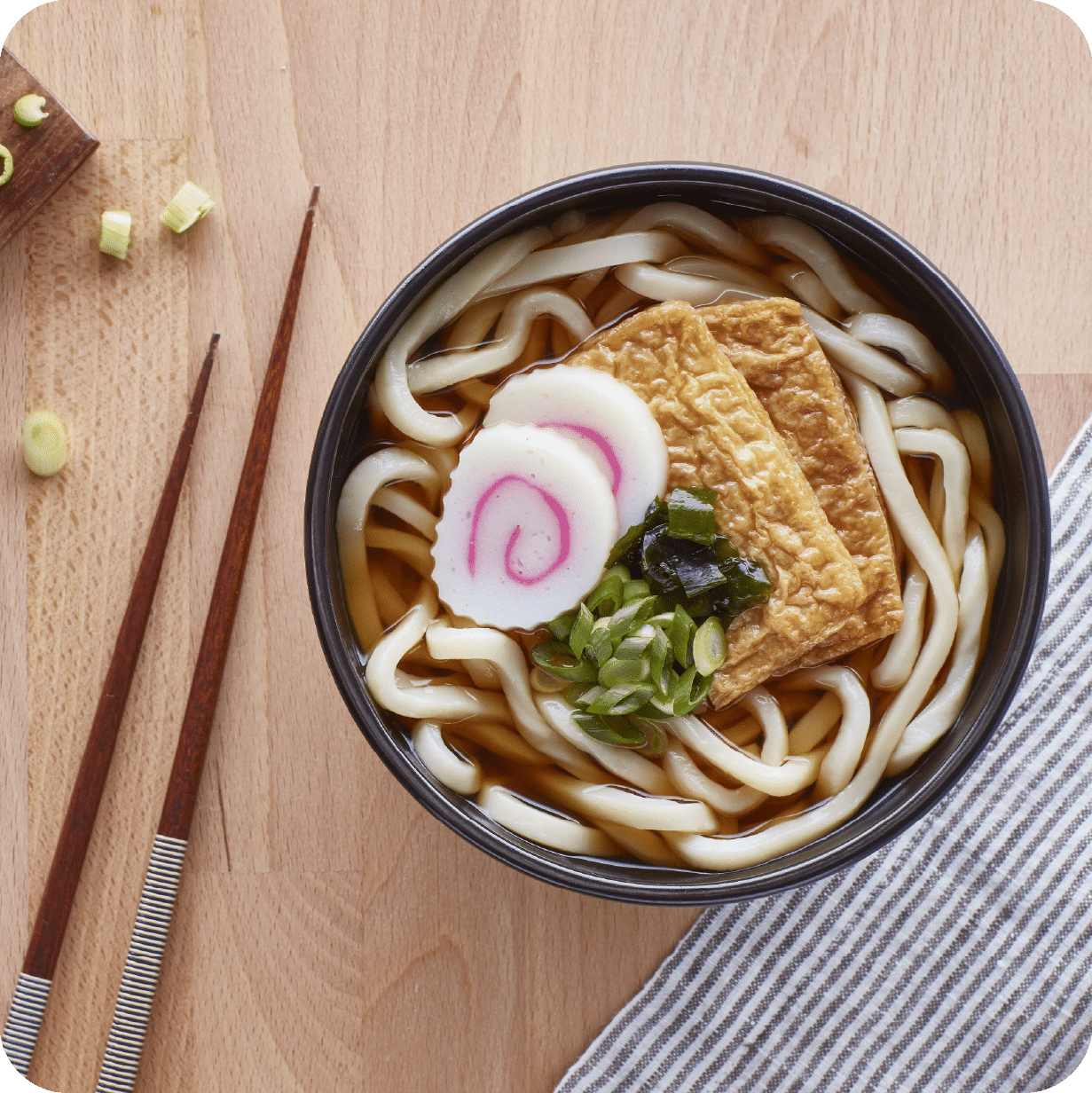Are you ready to dive into the world of custom udon? This isn’t just a dish—it’s an experience. Imagine sitting down with a steaming bowl of perfectly chewy noodles, topped with your favorite ingredients and drizzled with a sauce that speaks directly to your soul. Sounds dreamy, right? Well, buckle up because we’re about to take you on a culinary journey that will change the way you think about udon forever.
Now, let’s be real here. Udon isn’t just some random noodle dish. It’s a staple in Japanese cuisine, and when you start customizing it, things get exciting. You can turn this classic dish into something entirely unique, tailored to your taste buds. Whether you’re a fan of spicy, savory, or something a little more adventurous, custom udon has got you covered.
But why stop at eating it when you can make it yourself? Learning how to create your own custom udon opens up a whole new world of possibilities. From choosing the right noodles to experimenting with sauces and toppings, there’s so much to explore. So, grab your apron, and let’s get started on this delicious adventure!
Read also:Julesarii The Rising Star Of Modern Creativity
Table of Contents
- The History of Udon
- Types of Udon Noodles
- Customizing Your Udon
- Exploring Different Sauces
- Popular Toppings for Custom Udon
- Cooking Tips for Perfect Udon
- Nutritional Benefits of Udon
- Delicious Custom Udon Recipes
- Pairing Udon with Drinks
- FAQ About Custom Udon
The History of Udon
A Journey Through Time
Udon’s story begins way back in the Nara period (710-794 AD), where it was originally served as a luxury item for the elite. Over the centuries, udon has evolved, becoming a beloved comfort food across Japan. But how did it become such a customizable dish? Well, as regional variations popped up, people started experimenting with different ingredients, sauces, and cooking methods. This laid the foundation for the custom udon we know and love today.
Interestingly, each region in Japan has its own take on udon. For example, Sanuki udon from Kagawa prefecture is famous for its firm texture, while Inaniwa udon from Akita prefecture is known for its thin, delicate strands. These regional differences highlight the versatility of udon and show why customizing it is so much fun.
Types of Udon Noodles
Finding Your Perfect Match
When it comes to udon, not all noodles are created equal. There are three main types you should know about: fresh, dried, and instant. Fresh udon is the real deal—soft, chewy, and packed with flavor. Dried udon is a great option if you want to store your noodles for longer periods, and instant udon is perfect for those busy weeknights when you need something quick and easy.
Here’s a quick rundown of the pros and cons:
- Fresh udon: Best texture but requires refrigeration.
- Dried udon: Convenient and long-lasting but might lack some freshness.
- Instant udon: Super quick to prepare but often comes with added preservatives.
Customizing Your Udon
Make It Yours
Custom udon is all about personalization. Start by choosing your base—whether it’s a rich, creamy broth or a simple dashi-based soup. Then, think about what flavors you want to highlight. Are you in the mood for something spicy? Go for some chili oil or red pepper flakes. Craving something creamy? Add a dollop of miso paste or some butter.
Don’t be afraid to get creative! You can even mix and match different ingredients to create your ultimate flavor profile. The key is to experiment and find what works best for you.
Read also:River Deary The Rising Star Whos Taking The World By Storm
Exploring Different Sauces
Where the Magic Happens
Sauces are the secret weapon in any custom udon recipe. Here are a few options to consider:
- Kakejiru: A classic soy-based broth that pairs perfectly with fresh udon.
- Miso: Adds a rich, nutty flavor that complements almost any topping.
- Shoyu: A soy sauce-based broth that’s both salty and savory.
- Spicy噌 (Miso Chili): For those who love a little heat.
Remember, the sauce you choose will set the tone for your entire dish, so pick wisely!
Popular Toppings for Custom Udon
Stack It High
Toppings are where you can really let your creativity shine. Here are some popular options:
- Tempura: Crispy bits of tempura add a satisfying crunch.
- Eggs: A soft-boiled egg or even a raw egg stirred into the broth creates a creamy texture.
- Veggies: From spinach to mushrooms, veggies are a great way to add color and nutrients.
- Meat: Chicken, beef, or pork can take your udon to the next level.
Of course, the sky’s the limit when it comes to toppings. Feel free to add whatever suits your fancy!
Cooking Tips for Perfect Udon
Master the Art
Cooking udon might seem simple, but there are a few tricks to getting it just right. First, always follow the package instructions for cooking time. Overcooking can lead to mushy noodles, which no one wants. Second, rinse your cooked udon under cold water to prevent it from getting sticky. Finally, don’t forget to season your broth properly—it’s the heart of your dish.
For an extra touch, try toasting your dried udon before boiling. This gives it a deeper flavor and a slightly firmer texture. Trust us, it’s worth the extra step!
Nutritional Benefits of Udon
Eating Well
Udon isn’t just tasty—it’s also pretty good for you. Made from wheat flour, udon provides a good source of carbohydrates, making it a great energy booster. Plus, by adding plenty of veggies and lean proteins, you can turn your custom udon into a well-rounded meal.
Just be mindful of the sodium content in some store-bought broths and sauces. Opt for low-sodium alternatives whenever possible, or make your own from scratch for a healthier option.
Delicious Custom Udon Recipes
Try These Out
Here are a couple of recipes to get you started:
- Miso Butter Udon: Cook your udon according to package instructions, then toss it with softened butter and miso paste. Garnish with green onions and sesame seeds for extra flavor.
- Spicy Chicken Udon: Sauté sliced chicken breast in a pan with garlic and chili flakes. Add cooked udon and a splash of soy sauce. Top with a soft-boiled egg and some fresh cilantro.
These recipes are just the beginning. Once you start experimenting, you’ll discover endless possibilities!
Pairing Udon with Drinks
Complete the Experience
No meal is complete without the right drink. For custom udon, consider pairing it with:
- Sake: A warm cup of sake complements the rich flavors of udon perfectly.
- Green Tea: Refreshing and light, green tea is a classic Japanese pairing.
- Beer: A cold beer can balance out spicier udon dishes.
Experiment with different drinks to see what works best for your custom creation!
FAQ About Custom Udon
Answers to Your Burning Questions
Q: Can I use gluten-free noodles for udon?
A: Absolutely! Many stores now offer gluten-free udon noodles made from rice flour or other alternatives.
Q: How long can I store cooked udon?
A: Cooked udon should be consumed within 24 hours for optimal freshness. Store it in an airtight container in the fridge.
Q: Is udon healthy?
A: While udon itself is relatively healthy, the overall nutritional value depends on what you add to it. Stick to fresh ingredients and avoid excessive amounts of salt and sugar.
Conclusion
So, there you have it—your ultimate guide to custom udon. From its rich history to endless customization options, udon is more than just a dish; it’s a canvas for your culinary creativity. Whether you’re a seasoned pro or a complete beginner, there’s always something new to discover in the world of udon.
We’d love to hear about your custom udon adventures! Drop us a comment below and let us know what your favorite combinations are. And don’t forget to share this article with your friends who are just as obsessed with udon as you are. Happy cooking!


